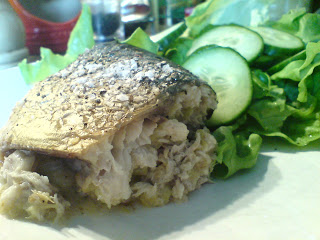Seeing as we’d had a very un-summery meal of beef and dumplings, I thought I’d better do something nice and cool and refreshing for pudding. This fool is classed as a winter fool by Jane Grigson, I assume because it has dried fruit rather than fresh fruit in it. However, she says it can also be made into an ice cream, transforming into a summer pud.
It uses an ingredient previously unknown to me – dried apricots; not the semi-dried apricots you get from the supermarket, but whole, tiny completely dry ones from Asian supermarkets. They really are rock-hard dry so make sure you soak them in cold water overnight before you use them.

In case you didn’t know what to look for –
the apricots in their dry state
This recipe uses six ounces (dry weight) of the apricots.
Simmer the soaked apricots in their soaking water for 5 minutes. Remove them with a slotted spoon and boil their soaking liquor down to a syrup. Meanwhile, remove the flesh, reserving the stones, and mash it into a coarse puree. Crack open the reserved stones, to reveal the kernels, chop them roughly and add those to the puree. When the soaking liquor is syrupy add that too and allow to cool. Add some icing sugar and lemon juice to bring out the flavours, if needed. Beat ½ pint of whipping or double cream and fold this into the puree. If you are making this into a fool put into glasses and chill, or alternatively pour into an ice cream maker.
Griggers suggests serving it with almond biscuits, but I went one better – I served them in ice cream cones with home make monkey blood (that’s raspberry sauce to you).

#163 Wild Apricot Fool or Ice Cream – 6/10. Very nice, though lacked flavour; this was, I think, due to it being cold and therefore requiring a lot more sugar and lemon juice than I gave it, as it tasted fine before freezing. That said it did have a nice honey-like taste and the chopped kernels were delicious and made it texturally more interesting than a bog-standard ice cream. I think the recipe was best suited to a fool rather than an ice cream. With a few changes though, this could be bumped up to be a 7 or 8 out-of-ten ice cream.
FYI: apricot kernels contain potent anti-cancer drugs and have been used to treat tumours since the 6th Century. They are also believed to cleanse the respiratory system and have been used to treat coughs. Combine this with the super-high carotenoid content of the apricot flesh, and you’ve got a serious super-food on your hands, mister!









